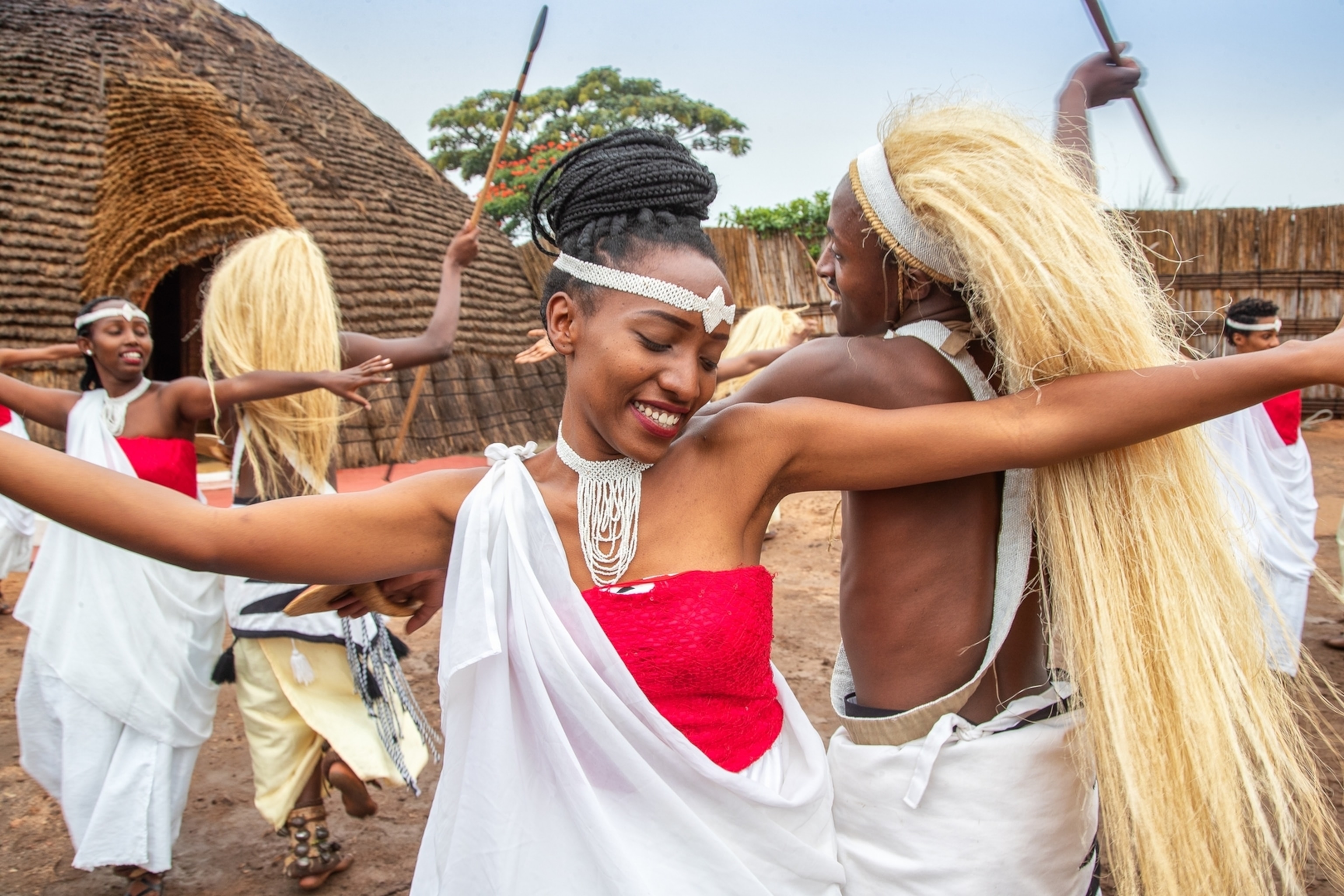
From its bold, waxy fabrics to the culinary simplicity of a perfectly grilled Rwandan tilapia to the intricate shifts of a beating drum during a traditional performance, Rwanda is a haven for the creative. The entire country feels like a canvas. Artisans – from jewelry makers to muralists – pick a palette and platform and leave their mark to the delight of locals and tourists alike. Tour the country and keep an eye out for beauty in all its forms.
Wearable art
Made to measure fashions and couture creations share a common ally in the Rwandan designers who bring them to life. A kaleidoscope of colors and unique fabric combinations await. Look out for “Made in Rwanda” designs from fashion leaders like House of Tayo and rw&a Clothing. You’ll find savvy sellers with an eye for design among the fabric merchants at Kimironko Market, as well. Pick from the dizzying selection and then let the on-site tailors craft you a new favorite. Need inspiration? Watch the daily commutes of the residents of Rwanda's capital city, Kigali. It is enough to incite fashion envy.
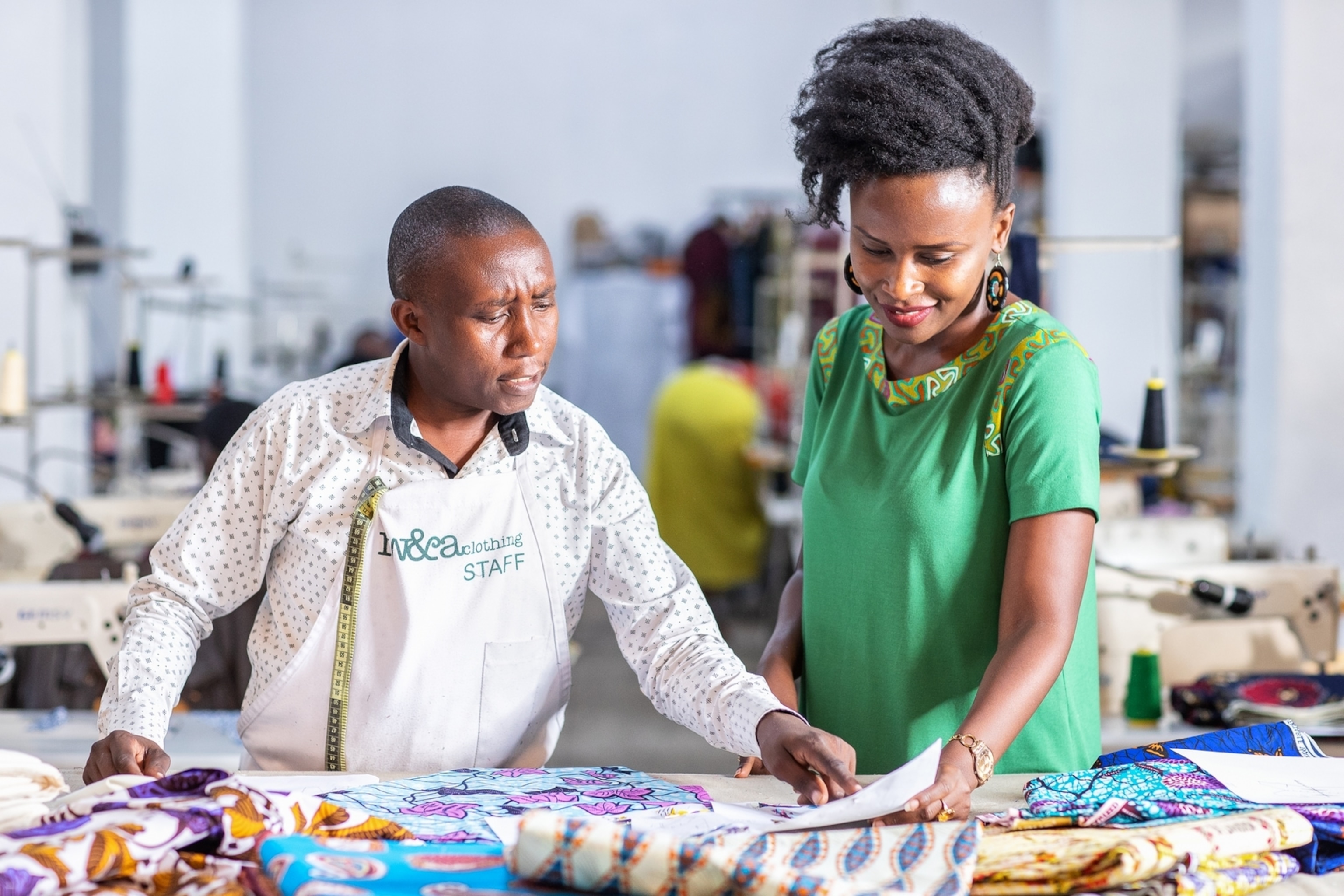
Storied souvenirs
Handicrafts, be they in market stalls or museum gift shops, all bear a pride in craftsmanship. Patterns woven into "peace" baskets or carved into the handles of a walking stick, often require a high level of skill and patience on the part of the artist. At studios across the country, you can meet the creators, hear the stories behind their work and share in the pride.
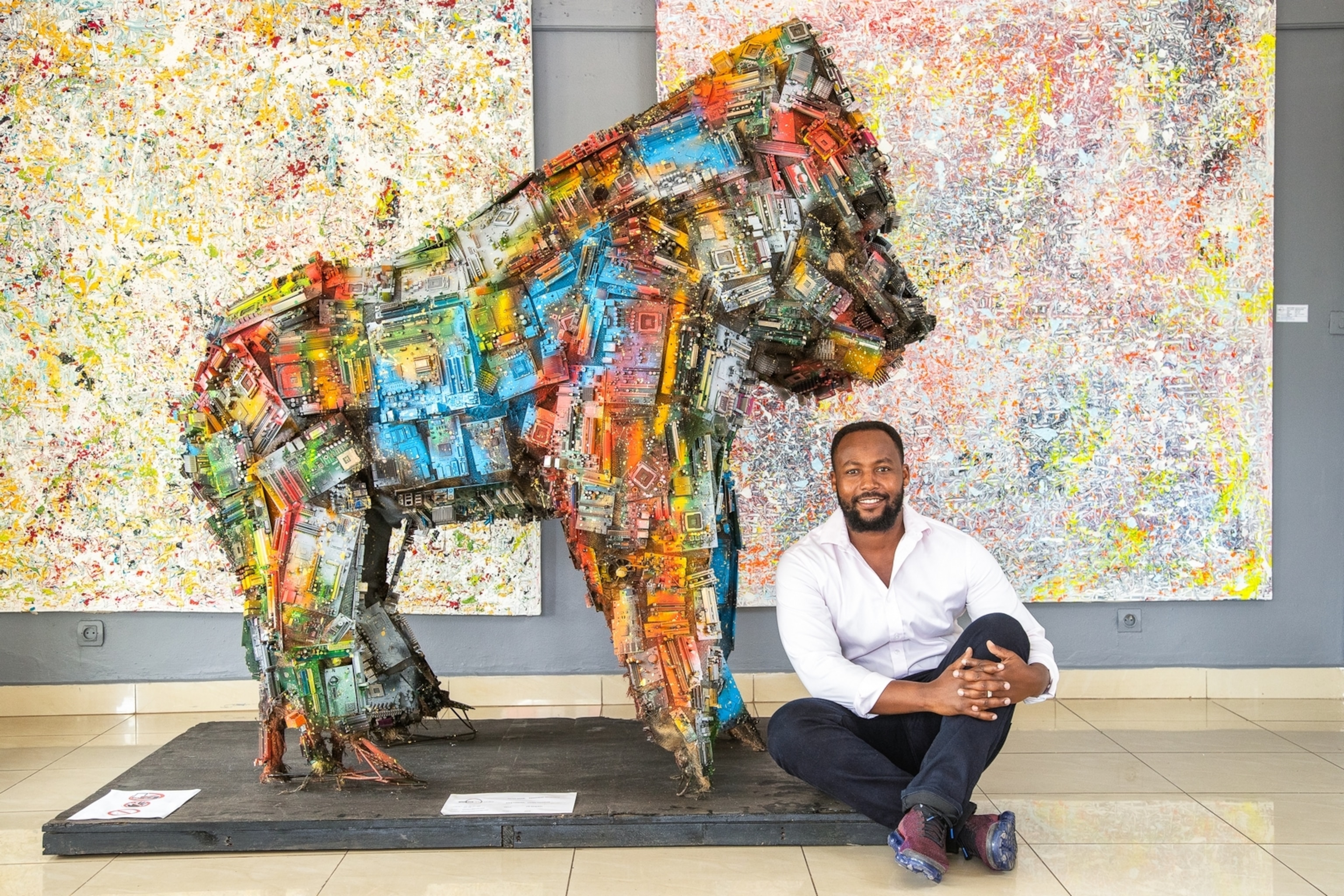
Historic connections
The impact of traditional architecture on modern day Rwanda is everywhere. The modern Kigali Convention Centre – an iconic landmark in the middle of the capital – takes its beehive-like shape from the traditional homes that were once a staple across the country (you can still spot replicas at the King’s Palace Museum in Nyanza). The bold patterned artwork on the walls of the most luxurious properties are often replicas of symbols taken from traditional art. Purchasing souvenirs to carry home with you is the simplest way to salute the country’s past and future.

Food as art
Rwandans have raised the simple brochette (skewered meat) to an artistic indulgence. The same can be said for mandazi – the deep-fried dough sweet that is topped with choices that range from Nutella to honey. A multicultural country also means multicultural culinary twists. You’ll find hints (and outright replicas) of Indian, Asian and Western favorites that include Rwandan staples of plantain, sweet potato, and cassava on menus across the country. Not to be outdone, the food often inspires art as well. At the One&Only Nyungwe House, guests find inspiration for painting classes among the lush, green tea plantations, and in Musanze, travelers will find yogic poses with a mountain backdrop bring the Zen they’re seeking.
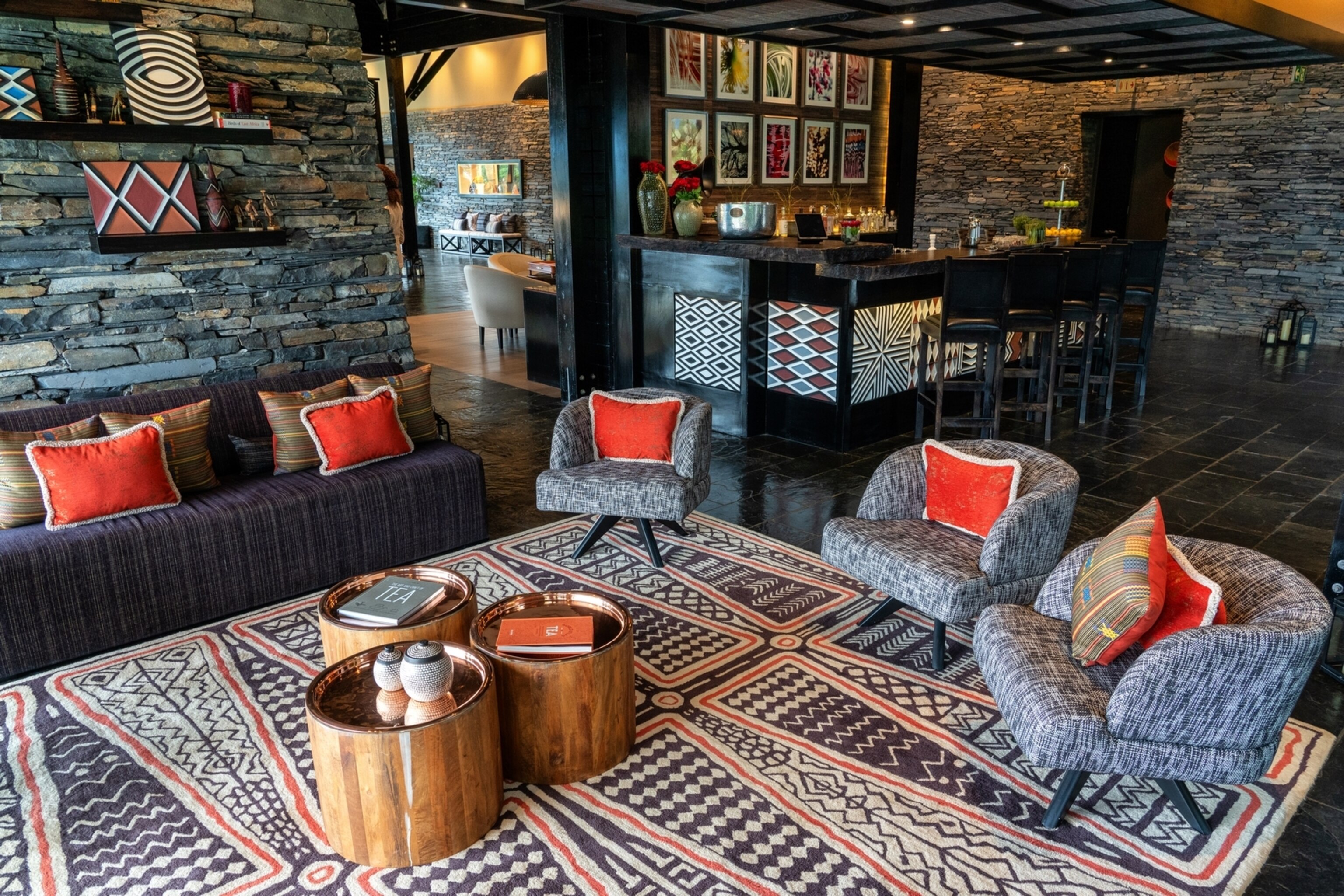
Outdoor galleries
You’ll find paintings, sculptures, mixed media pieces and more in spaces like the Inema Arts Center, but for a less nuanced approach head to the streets. Muralists tell their stories in public spaces using oversized portraits and brightly colored geometric shapes and symbols. Youth center walls, corrugated tin fences and shop stalls across the country sport messages of inspiration, whimsy, and activism from local painters, each adding a beauty mark in a public space.
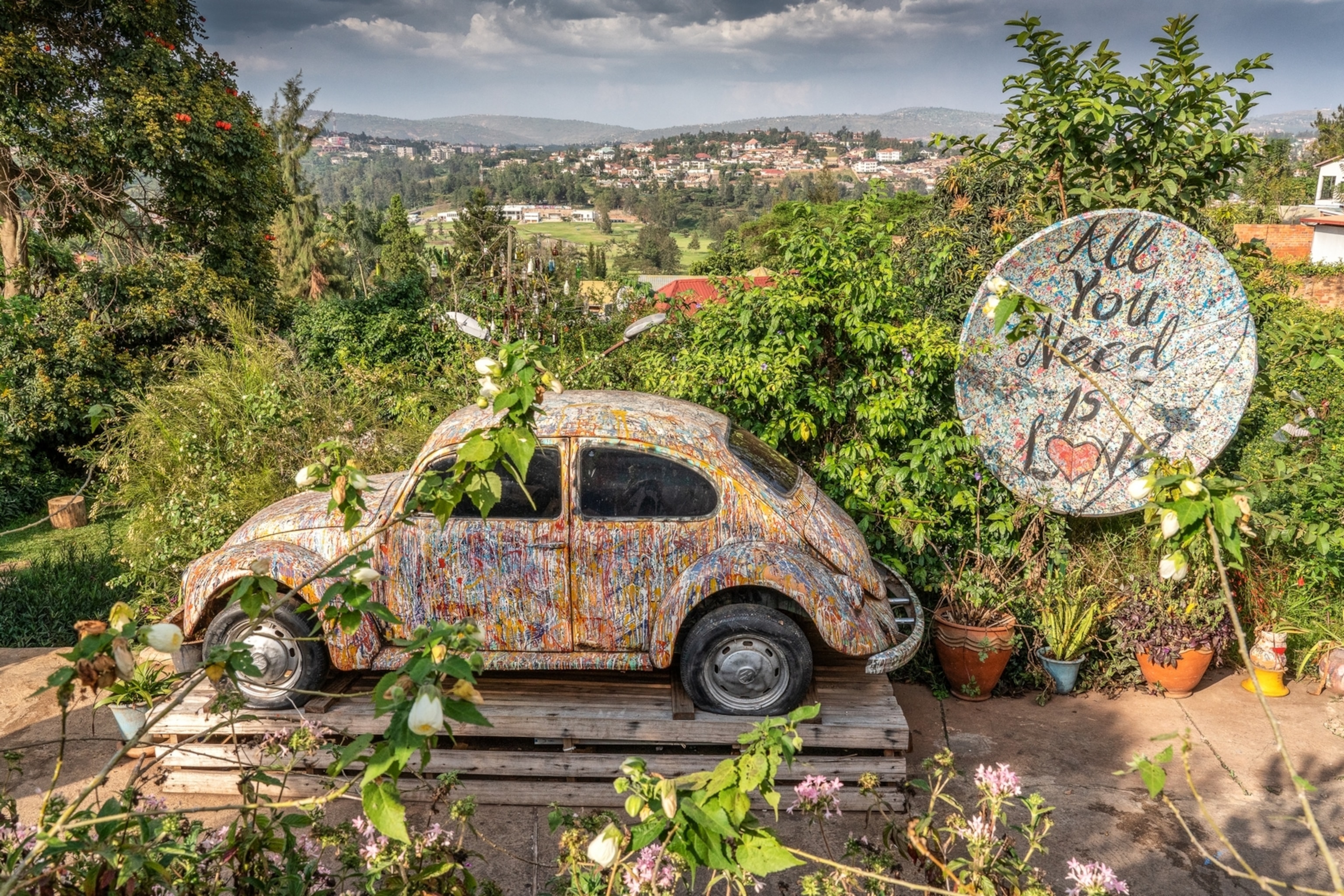
African beats
There is music everywhere and it is infectious: DJ Africano spinning house music or reggae, a modern Inanga player with modern creations and those Afrobeat rhythms that you feel through the floor long before they make it to your eardrums. There are rap artists like Angell Mutoni and folk artists like Deo Munyakazi. There is a place for all music here, and creators come from all walks of life and all parts of the country. Finding yourself swaying to and fro at an Intore dance performance or humming a tune you heard on the car radio earlier in the day, is as much a part of the Rwanda experience as any spot you’ll visit.
